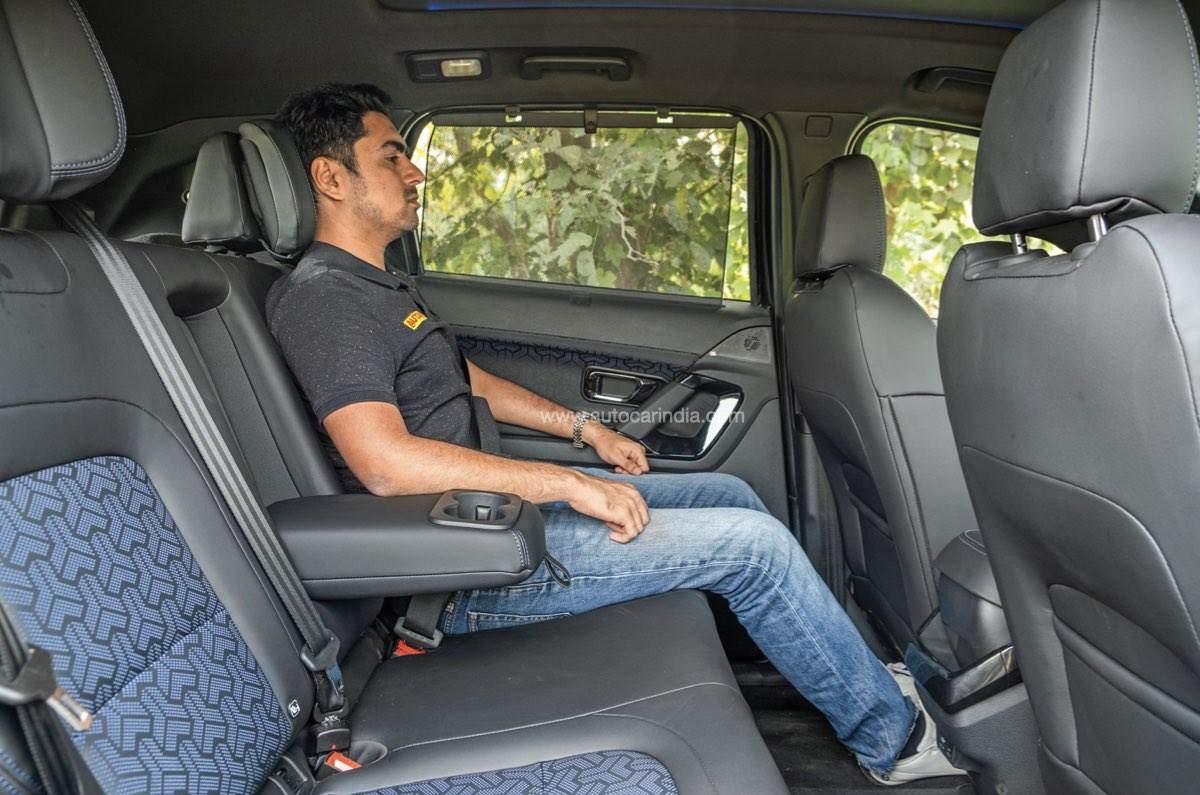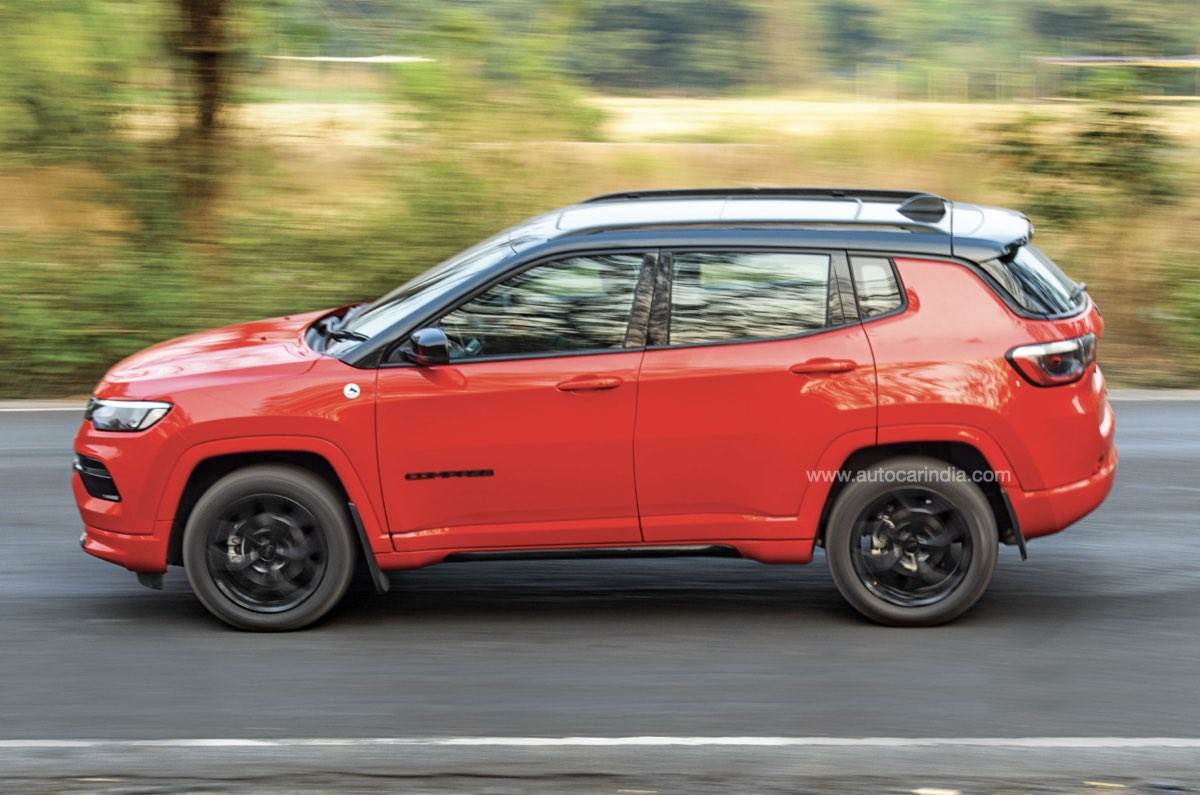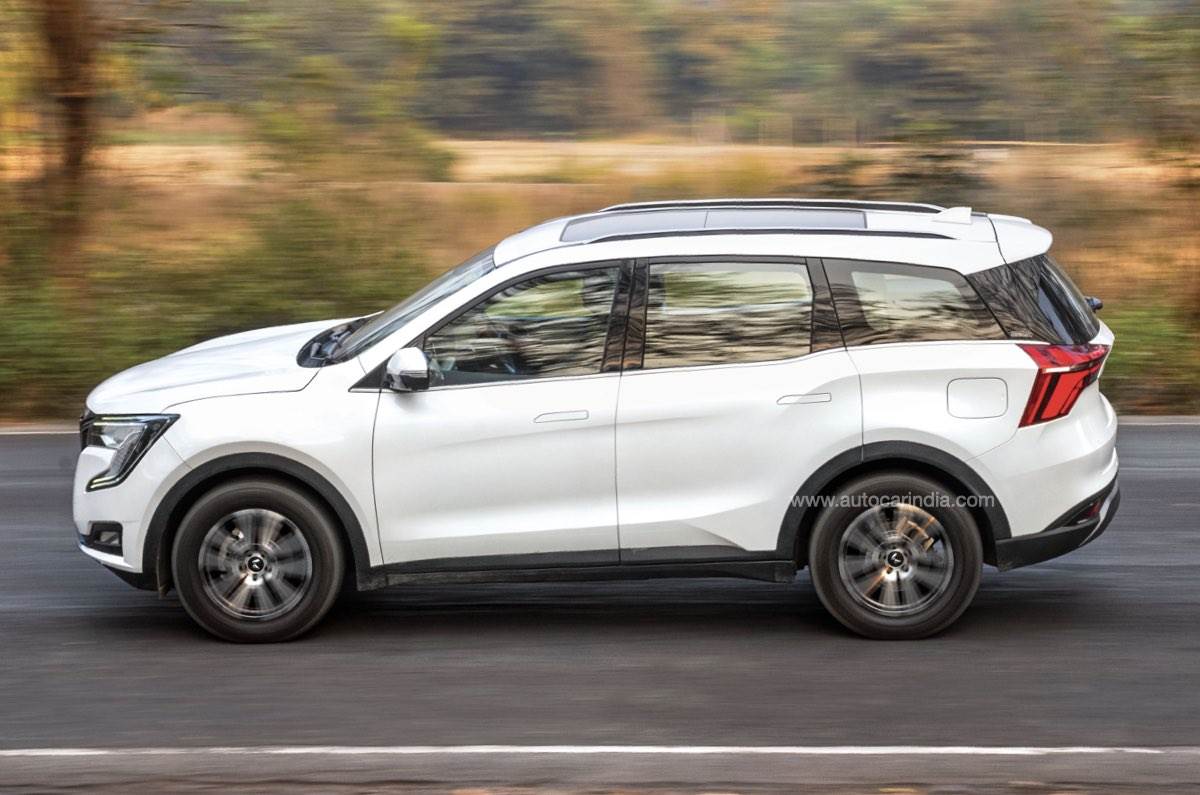
Back in 2019, we compared the Tata Harrier, Mahindra XUV500 and the Jeep Compass, and the Harrier emerged victorious for being true to Tata’s ‘more car per car’ philosophy with a stellar value for money proposition. Half a decade later, the game has changed. On one hand, the Jeep Compass and Tata Harrier have undergone significant midlife transformations, while on the other, the new-age XUV700 has replaced the XUV500. So a rematch was inevitable.

For this comparison, we’ve taken their front-wheel-driven diesel-automatic variants into consideration. The most expensive here is the Jeep Compass Black Shark, priced at Rs 28.69 lakh (ex-showroom). Incidentally, the Compass diesel-auto 4x2 gets an even pricier ‘Model S’ variant at Rs 30.19 lakh. The Tata Harrier in its Fearless+ Dark variant is priced at Rs 26.44 lakh. Since the five-seater XUV700 is only available up to its mid-spec AX5 (Rs 20.09 lakh), for this comparison, we’ve taken the fully loaded 4x2 seven-seater AX7L variant that’s priced at Rs 25.79 lakh.
Tata Harrier vs Mahindra XUV700 vs Jeep Compass: exterior and design
On account of its smaller dimensions, the Jeep Compass appears dwarfed by its burly rivals. But the suave Jeep with its sophisticated demeanour and neatly chiselled lines has aged rather gracefully. It retains typical SUV traits like its flat bonnet and squared-out wheel arches, however, its body-coloured cladding looks more urbane than rugged, and its two-tone roof visually shortens its height.

The Harrier’s arresting design and imposing road presence exert serious appeal. This ‘Dark’ version with blacked-out elements nicely complements its connected LED lights in the front, massive 19-inch wheels, and its connected LED tail-lamps, making the Harrier a stunner. Its eye-catching, head-turning design is what makes buyers gravitate towards this Tata.

The XUV700 sports some exaggerated design elements like its oversized comma-like DRLs, and unlike Mahindras of yore, the XUV700’s styling isn’t quite as overdone. In fact, it looks rather polished and in this test, the well-proportioned XUV also has size in its favour, being the longest, tallest, and the one with the longest wheelbase.
Tata Harrier vs Mahindra XUV700 vs Jeep Compass: interior and comfort
The Jeep feels most car-like in this company, with relatively low seating, however, its seats are the comfiest of the lot, and its driving position, the sportiest. Its interior design is a pleasing blend of classic and modern elements. There are plenty of buttons, knobs as well as analogue dials, and then there’s a nice, large touchscreen too. What’s more, there’s a generous use of soft-touch plastics along with other high quality bits. In this Black Shark iteration, it also gets matte red inserts, which do a good job of breaking the cabin’s all-black monotony.

There’s a lot going on in the Harrier’s cabin in terms of design, and adding modernity are multiple big screens and touch panels. Its touchscreen is the largest in size, and the most feature-packed too, however, it isn’t devoid of glitches, which cropped up occasionally. The instrument cluster is a 10.2-inch unit like the XUV, however, the tiny fonts hamper readability. And while the touch-operable climate control looks upmarket, it isn’t easy to change the fan speed on the move without taking your eyes off the road. Some buyers could find the all-black interior with gloss-black panels a tad too ‘dark’, however, Tata also offers splashes of colour with other variants of the Harrier to liven its appearance. Ambient lighting and an illuminated logo further jazz up its interior to an extent. Like other Tatas, the Harrier’s ergonomics aren’t its strength. The large central console protrudes into the driver’s (left) knee room; using the wireless charging or USB chargers is tricky; and even though the front seats have a ventilation function and are electrically operable, these aren’t the comfiest due to a short seat squab, which results in limited thigh support.

Stepping into the XUV after the other two feels like a huge step-up in terms of airiness and sense of space, thanks to its light colours. What’s nice is that the dashboard design is minimalistic, and the twin screen – one each for the instrument cluster and the infotainment, significantly enhances its premium-ness. Even cabin ergonomics are far more agreeable with several storage areas, a commanding driving position and good visibility all-round. The front seats are among the comfiest, and while our test car was an older version, Mahindra now also offers front seat ventilation.
Tata Harrier vs Mahindra XUV700 vs Jeep Compass: rear seat comfort
The Jeep’s rear seat is comfortable for two adults, with ample knee room and the best thigh support of the three. Its backrest angle is upright, and headroom for six-footers will be tight. A third occupant won’t feel welcome either due to its narrow width, and the dark colours seriously hamper the sense of space on offer. What’s nice is that even though its boot is the smallest on paper, it is well-shaped and can haul nearly as much luggage as its larger rivals.

In this contest, it is the Tata Harrier with the best backseat experience. It is very spacious and supportive, and the headrest significantly ups comfort levels. What’s more is that in addition to pillar-mounted rear air vents, ample storage and charging provisions also add to its practicality. Boot space is generous and an electrically operable tailgate with a hands-free operation adds convenience to the package.

The Mahindra scores well on space and comfort too, and it is the only one which has a reclinable backrest. There’s also a boss-mode feature, wherein the rear passenger can tug a lever and push the front passenger seat all the way forward to free up more legroom. And with an almost flat floor and a generous cabin width, a middle passenger can sit here with reasonable wiggle room. With three rows up, boot space is tight, however, the last row folds flat to reveal generous cargo capacity.
Tata Harrier vs Mahindra XUV700 vs Jeep Compass: features

The Tata Harrier is the best-equipped SUV here boasting of kit like 19-inch alloys, the largest 12.3-inch touchscreen, ambient lighting, an illuminated steering wheel and rear window sunshades being exclusive features. The Harrier and Compass Black Shark, both get an electrically operable tailgate and an electrically operable passenger seat. The XUV700 and Harrier get a full ADAS suite, 360-degree camera, ventilated front seats and premium speakers (the Tata gets JBL, while the XUV700 gets Sony). All three get kit like Auto LED headlamps, panoramic sunroofs, electric driver’s seat with memory, touchscreens with wireless Android Auto and Apple CarPlay, dual-zone climate control, rear air-con vents and wireless charging, among others.
Tata Harrier vs Mahindra XUV700 vs Jeep Compass: powertrain and perfromance
The Jeep Compass and Tata Harrier are powered by the same FCA-sourced 2.0-litre diesel engine, which makes an identical 170hp and 350Nm in both cars. However, the similarities end there.

On the Compass, transmission duties are carried out by a 9-speed automatic, and even though the diesel packs in adequate low-end grunt and pulls strongly, there’s no getting away from the transmission’s lazy character. The shifts are slow, and there are no paddle shifters for manual control over the transmission either. However, outright performance isn’t bad, and the Compass is actually quicker than the Harrier. What’s also a huge difference between the two cars is cabin insulation. The Jeep is far better insulated than the Harrier, thus engine and ambient sounds are relatively more muted.

On the Tata Harrier, the engine is paired to a 6-speed automatic, which feels a tad better tuned than the former. Better spaced gearing as well as a more progressive power delivery make the Harrier feel rather effortless to drive, but while the powertrain feels responsive, rolling acceleration with your foot pinned to the floor isn’t quite as impressive as the Jeep. A common observation between the Jeep and Harrier is that the boost from the turbo feels mellowed down post the BS6.2 update, hence power delivery doesn’t feel as spikey as it used to be. The Tata is the only one here to offer paddle shifters, however, these are very conservative, and don’t support an aggressive driving style, so this transmission is best left in full-automatic mode.

Mahindra XUV700’s diesel impresses on many fronts and frankly, this powertrain belongs in a different league altogether. Not only is it quieter than the Jeep and Tata – with the diesel drone far more muted in comparison – it also produces class-best 185hp and 450Nm of torque. Having a 100Nm torque advantage over its rivals makes the XUV feel effortless. Power delivery feels freer, much smoother and acceleration is deceptively brisk too. Complemented by an intuitive 6-speed automatic, the Mahindra is the quickest here.
Tata Harrier vs Mahindra XUV700 vs Jeep Compass: ride and suspension
The Jeep Compass’ tight body control and superb driving manners will appease driving enthusiasts, and despite being the sportiest to drive, what’s also nice is the ride quality that exudes a sense of toughness and indestructibility, and tackles bad roads like a champ.

The Harrier riding on 19-inch wheels has the busiest low-speed ride of the trio but feels flat and composed as you pick up the pace. Incredibly though, true to its Land Rover-derived underpinnings, it feels adept over rough patches and it smothers imperfections in its path rather capably. The Harrier isn’t a sporty handler and you can feel its weight around a series of bends, and it doesn’t instil the same level of confidence while hustling it on a winding section of road as the other two.

Mahindra’s soft suspension setup lends the XUV the comfiest low-speed ride quality, and its chassis feels rugged while traversing off-road trails. Equally impressive is the XUV’s composure at cruising speeds as well as its car-like driving manners, which masks its bulk much better than the Tata, especially when driving with verve.
Tata Harrier vs Mahindra XUV700 vs Jeep Compass: verdict
The Jeep Compass’ tough-as-nails DNA, solid fundamentals and fun-to-drive nature bundled in a sophisticated package add to its desirability. However, it is the smallest and most expensive in this comparison. And with the least number of features, it also scores poorly in terms of value for money.

That’s where the Tata Harrier does well being the best-equipped of the bunch. Its design is perhaps its biggest selling point and its road presence, especially in its ‘Dark’ avatar, is simply unmatched. What lets it down, however, is its below par engine refinement, its interior imperfections as well as choppy low speed ride.

The refined Mahindra XUV700 is the most powerful of the lot and more importantly, it is rather nice to drive too. Big on the outside, spacious and comfortable on the inside, and with its plush interior and lengthy equipment list it makes you feel like you’ve spent your money well. In summary, Mahindra has hit the ball out of the park with the XUV700’s roundedness and clever packaging, and that’s why it wins this comparison test quite convincingly.
Also see:
Tata Harrier vs Jeep Compass vs Mahindra XUV700 comparison video
Tata Motors to launch three new SUVs in 2024



